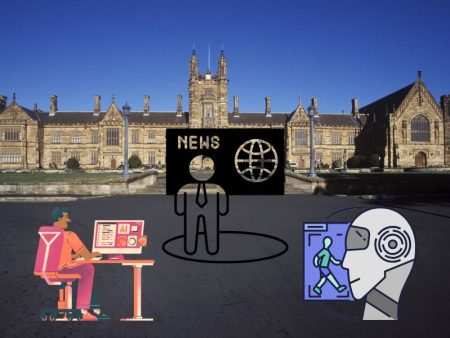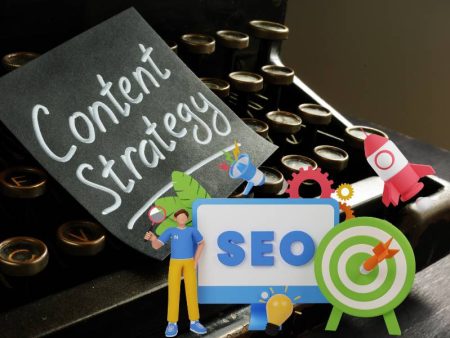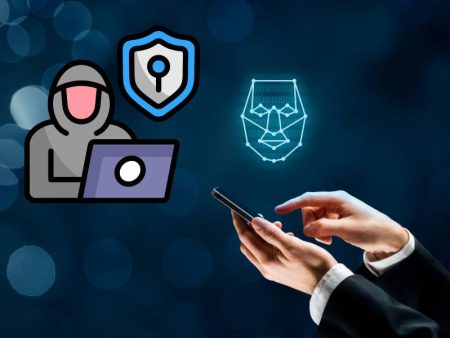Hey, hey! Welcome to the wild world of email marketing, where every word counts and every subject line is either a home run… or a tumbleweed moment.
You ever sit there staring at your screen, coffee cooling beside you, wondering, “How do I even start this email?”
I’ve been there. You’re juggling 47 other tasks, deadlines are looming, and your creativity feels… well, ghosted. That’s where ChatGPT swoops in—your friendly AI sidekick ready to spark ideas, punch up language, and help you sound like you.
In this post, we’re diving deep into using ChatGPT for email marketing—covering tips, real-deal prompts, and some banter (because life’s too short for boring emails). We’ll even touch on tools like AI Email Organizer, AI Sales Email Assistant, and AI Email Writer Reply.
Let’s jump in.
Why ChatGPT for Emails?
Why am I geeking out over ChatGPT here?
- Speedy first drafts: No more blank-screen paralysis.
- Consistent tone: ChatGPT can match your brand voice—or help you experiment.
- Idea generator: Need 5 creative ways to say “don’t miss out”? Boom.
- Language polish: No more awkward phrasing or unintended tone-deaf moments.
But—and this is crucial—ChatGPT doesn’t replace you. It amplifies you and catches your blind spots.
Set the Scene: Persona and Tone
Before typing “Write me an email,” set the stage. Think:
- Who am I writing to?
- What problem am I solving?
- What feeling do I want to evoke?
Try a prompt like:
“You’re a friendly UX designer email coach. Write a 150‑word email to busy marketing managers, explaining why they should attend a free workshop on simple UX improvements.”
This gives ChatGPT context. Tone? Check. Intent? Check. Length? You got it.
The Anatomy of a High‑Performing Email
Every good email has:
- Subject line: Grabs attention
- Preview text: Teases the benefit
- Opening line: Connects emotionally
- Body: Delivers value
- CTA: Clear next step
- Signature: Warm sign‑off or PS
Use ChatGPT to help with each part. For example:
“Give me 3 subject lines under 50 characters for an email promoting a new UX tool. Keep it playful and value-focused.”
Prompt Example: Subject Lines
User:
“Suggest 5 subject lines for an email about my free UX audit service targeting SaaS founders. Keep it under 50 characters, playful but professional.”
You get subject line options—and one will probably stand out as clickable.
Using ChatGPT for Body Copy
Once your subject line is chosen, move on to the body. Here’s an example prompt:
“Write a 120‑word email to SaaS founders, introducing our free UX audit. Include empathy about busy schedules, outline benefits, and include a CTA to book a call.”
ChatGPT delivers a polished draft. Then you tweak—adding personal anecdotes, adjusting tone, or inserting stats you care about.
Personalization Edit Prompts
Generic email? No thanks. Add these refinements:
- Personalized intro: “Add a personalized sentence based on these details: [name, company, recent activity]”
- Urgency tone: “Make the opening more urgent and time‑sensitive”
- Shorter email: “Trim it to 80 words, keep conversational tone”
These help your email feel tailored, not templated.
Email Follow‑Up Sequences
One email isn’t enough. Let’s build follow‑ups:
Prompt:
“Generate three follow up emails after the initial UX audit invite:
- Reminder after 3 days.
- Social proof + testimonial.
- Last chance offer.”
This gives you a sequence—ready to copy, customize, and schedule through your system.
Tools That Help You Deploy
Now, drafting is one thing. Managing and executing is another—and where tools come in.
An AI Email Organizer can handle folder sorting, tagging, and suggest the best time to send. It frees up time you’d otherwise spend fiddling with your inbox.
If you’re closing deals? The AI Sales Email Assistant is your go-to. It crafts sequence emails, adapts outreach based on replies, and helps you keep momentum without sounding like a broken record.
And for follow-up replies? The AI Email Writer Reply gives you draft responses after someone books your call or asks questions—without you staring blankly at your screen.
Feel Human: Inject Personality
Here’s where things get fun. ChatGPT can generate copy, but you add you‑ness:
- Add anecdotes: “Last week, I realized…”
- Use emojis ⭐ or punctuation — when appropriate.
- Throw in casual language: “By the way…” or “Guess what?”
- Share vulnerability: “I used to struggle with…”
Prompt example:
“Rewrite this email with a friendly anecdote about your first UX audit mistake.”
Now it’s not just polished—it’s relatable.
Non‑linear Fun: Mix Formats
Emails don’t always need paragraphs. Try bullets:
“Convert this body into a bullet‑point list highlighting 3 benefits.”
Or make it a Q&A format:
“Rewrite as 3 FAQs that a skeptical founder might have.”
Non‑linear storytelling keeps the email mobile‑friendly and scannable.
Emotional Nuance & Empathy
Empathy = open rates. Here’s how to ask ChatGPT:
“Add emotional nuance acknowledging the challenge of hiring a UX designer under tight budgets.”
Then tighten up so it feels real, not salesy:
- “I get it”—shows understanding.
- “Imagine if”—evokes possibility.
- “No pressure”—lowers barriers.
Banter & Dialogue
Let’s make it more conversational. Prompt:
“Include friendly banter: ask a rhetorical question, offer a joke, and follow-up with a solution.”
Example snippet:
“Ever felt like you need a UX designer on speed dial? Me too. That’s why…”
Inject dialog-like style—for authenticity.
Save & Reuse the Best Prompts
Over time, collect your favorite prompt templates:
- Subject line gen
- Email body templates
- Follow-up sequences
- Personalization tweaks
Next time you write, copy+paste with tweaks. Consistency = efficiency.
Keep It Mobile-Friendly
Short paragraphs, headings, bullets = readable on phone. Consciously ask ChatGPT:
“Format this into short mobile‑friendly paragraphs under 3 lines each.”
Need urgency? Try:
“Add one sentence creating friendly urgency: seats fill fast, limited time.”
One-Pager: Sample Full Prompt
If you want to copy as is, here’s a complete prompt:
“You’re a friendly, casual growth marketer.
Write an 80‑word email to a busy SaaS founder inviting them to a free UX audit. Include:
– An empathetic opening about their busy day
– 2 bullet‑point benefits
– A clear CTA (“Book your audit call here”)
– A warm, personal sign‑off
Format it for mobile readability (short lines). Then, generate 3 subject line options.”
This kind of prompt gives ChatGPT enough context to nail it quickly.
Iterate, Then Polish
Once you get the draft:
- Add personal details: past conversation points, past timezones, inside jokes
- Check tone: too formal? too casual? adjust
- Run through tools like Hemingway or Grammarly—but don’t over correct; keep charm.
Throw in a Test
Send one email version to part of your list. A/B test subject line or intro wording. ChatGPT can generate variants:
“Give me 2 alternatives: one funny, one more formal.”
Then test to see which resonates.
Real-Life Case Study
Let me tell you a quick story:
Last month, I helped a friend sell her design workshop. We used ChatGPT:
- Brainstormed subject lines: “Ever struggled with off-brand UX?”
- Wrote initial email with empathy: “You’re probably juggling…”
- Created follow-ups: reminder + testimonial
- Tested formats (bullet list vs. narrative)
Result? A 22% open rate and 6% sign-up rate—almost triple her usual. She credited it to the personal feel, concise format, and consistent tone, which ChatGPT helped her maintain.
Final Tips
- Stay Human: ChatGPT drafts—you adapt.
- Use Anchors Sparingly: Only link when it adds value, as we did above.
- Iterate: Keep prompts that work, retire those that don’t.
- A/B test: Don’t trust everything blindly—test subject lines and intros.
TL;DR – In Bullet Form
- Use ChatGPT to draft subject lines, email bodies, and follow-ups
- Set tone, audience, and purpose in your prompt
- Add your personality on top for authenticity
- Use mobile‑friendly structure: short paragraphs, bullets, headings
- Test fat > fast: A/B subject, email bodies
- Adopt tools like AI Email Organizer, AI Sales Email Assistant, and AI Email Writer Reply to streamline deployment
- Iterate smartly—save prompts that work
Wrapping Up
So here’s the thing:
Email marketing doesn’t have to be soul-sucking. With ChatGPT, you get fast drafts and space to inject yourself. You keep empathy, quirks, and real-talk—while AI handles the heavy lifting and format.
Pair that with tools that organize and send effectively, and you’ve got a machine—or better yet, a team. Human creativity + AI efficiency = 🎯.
Ready to write your next email? Need help crafting a prompt or tweaking a draft? Hit me up—happy to co-pilot your next outreach.
Until then… may your subject lines be short, your CTAs clear, and your replies full of heart. 💌


